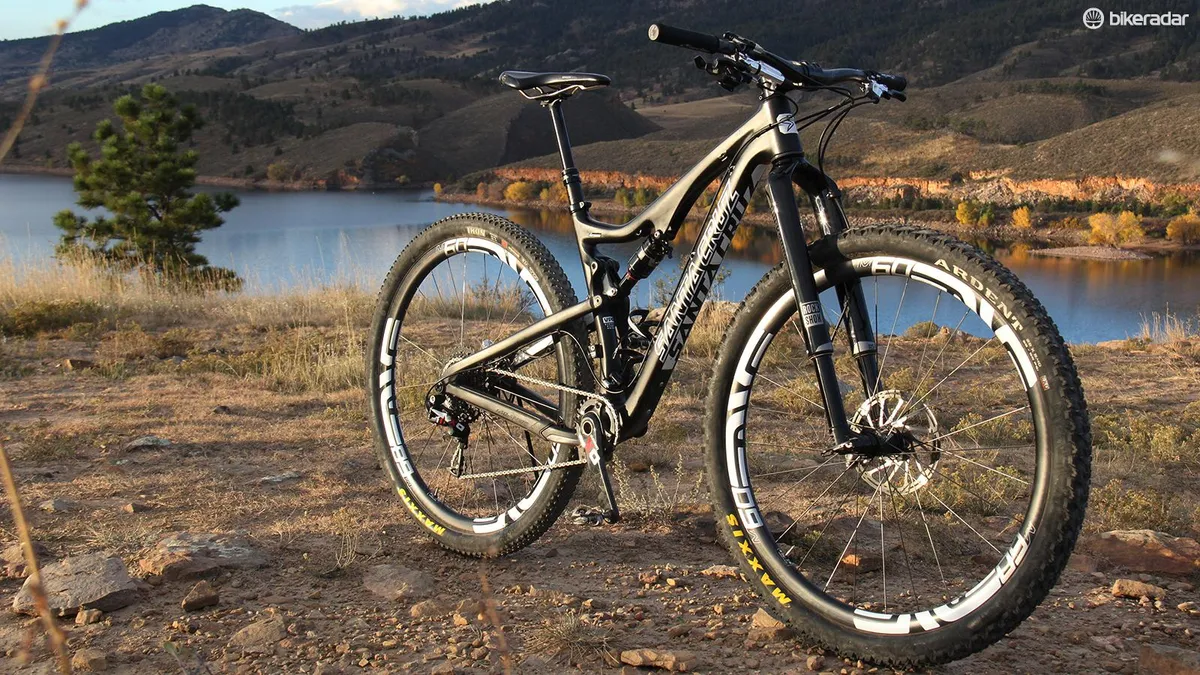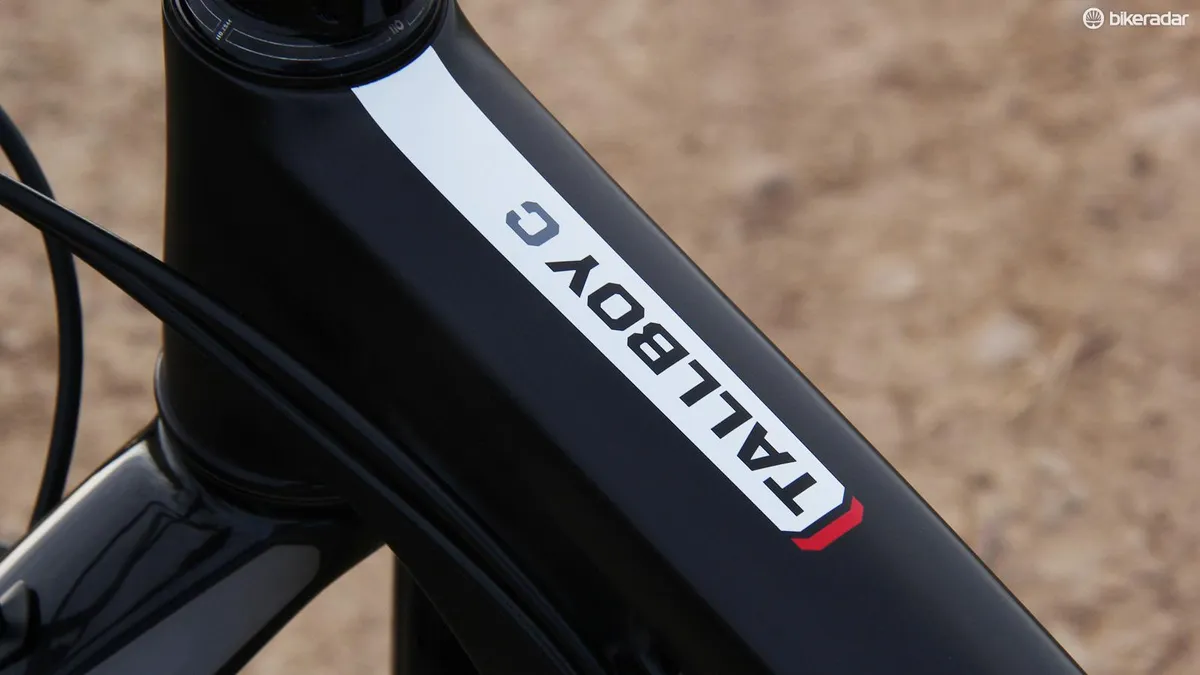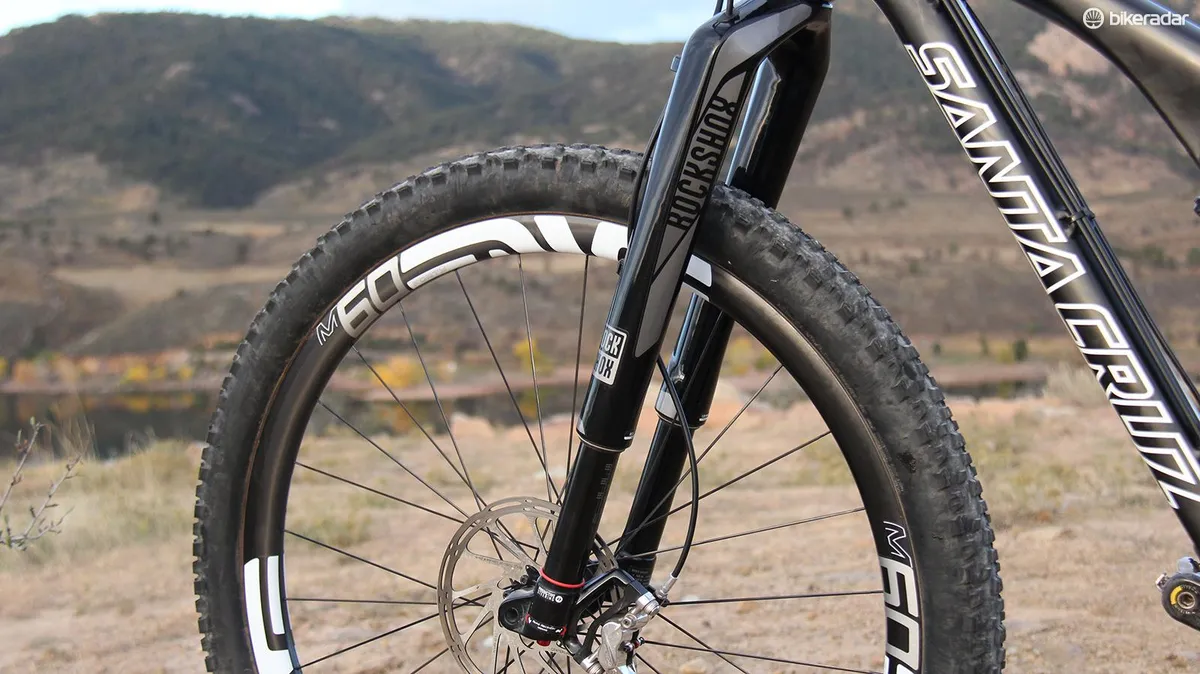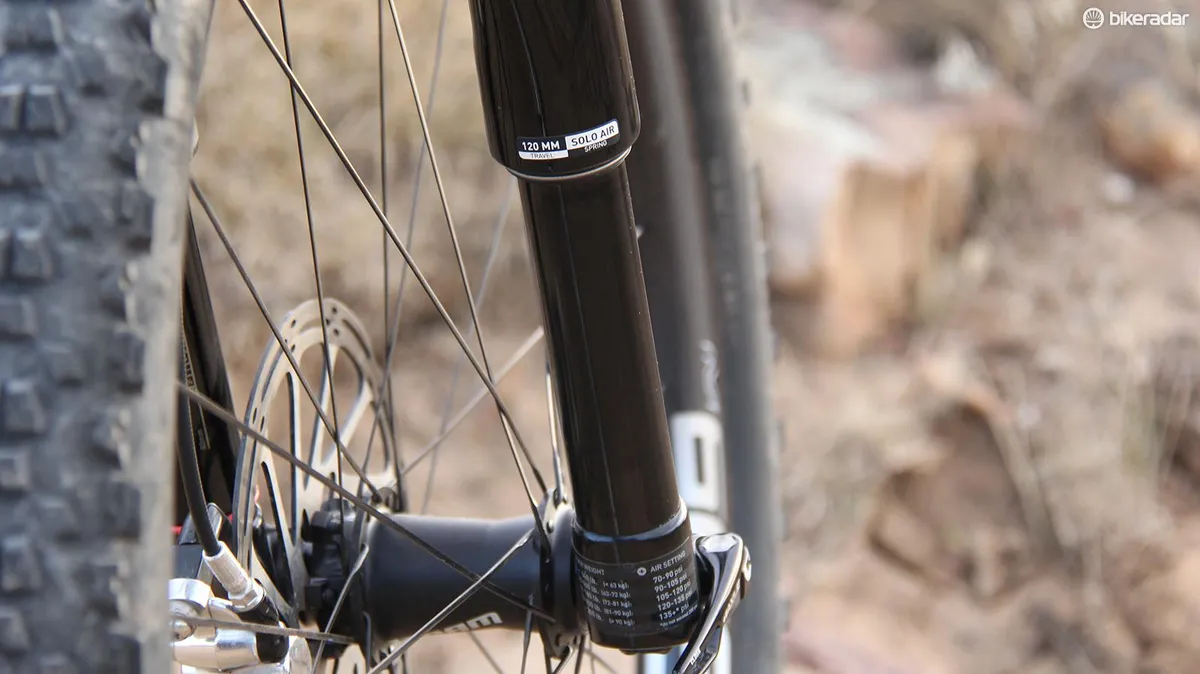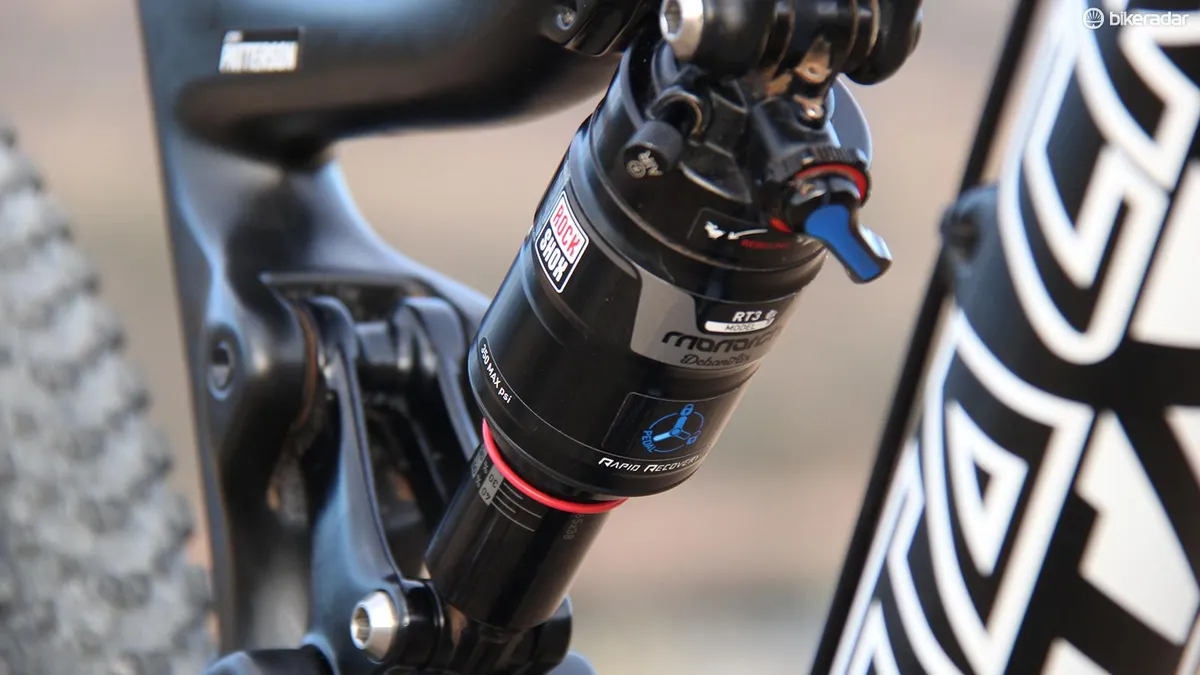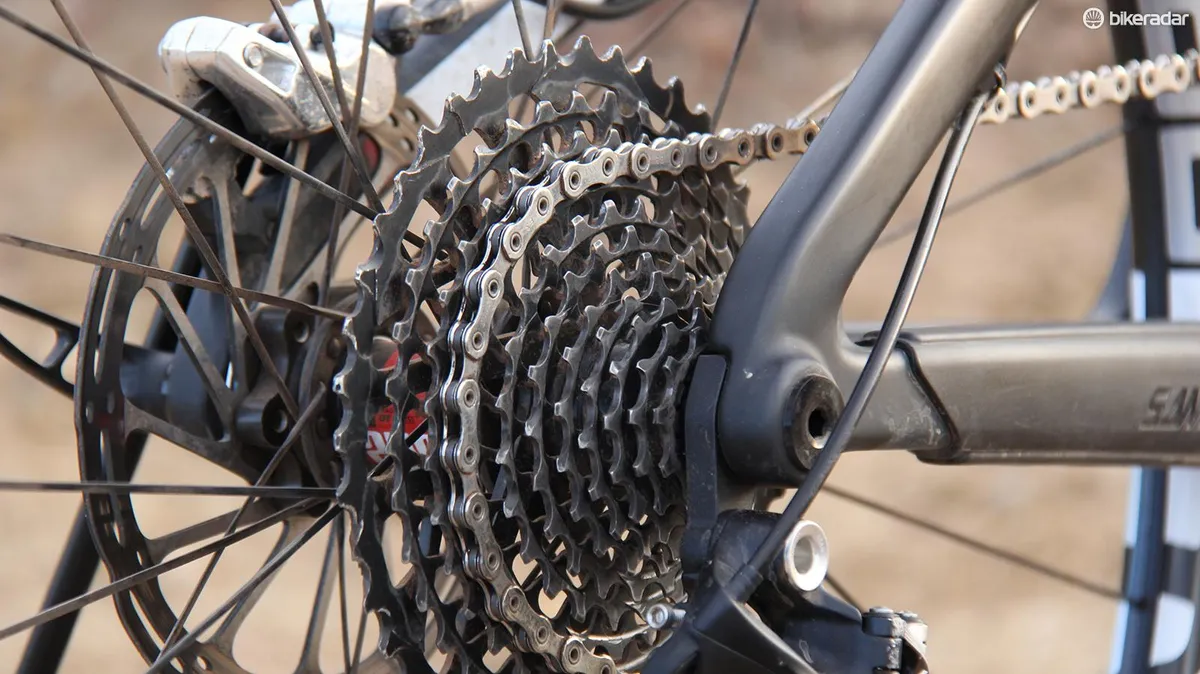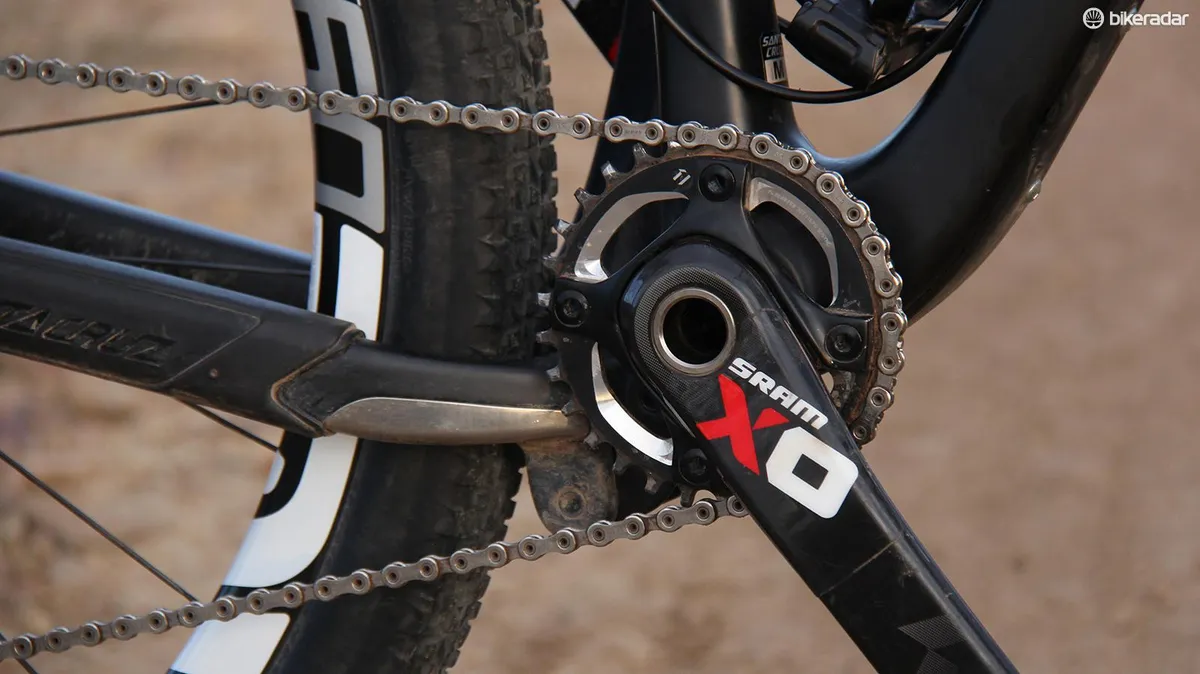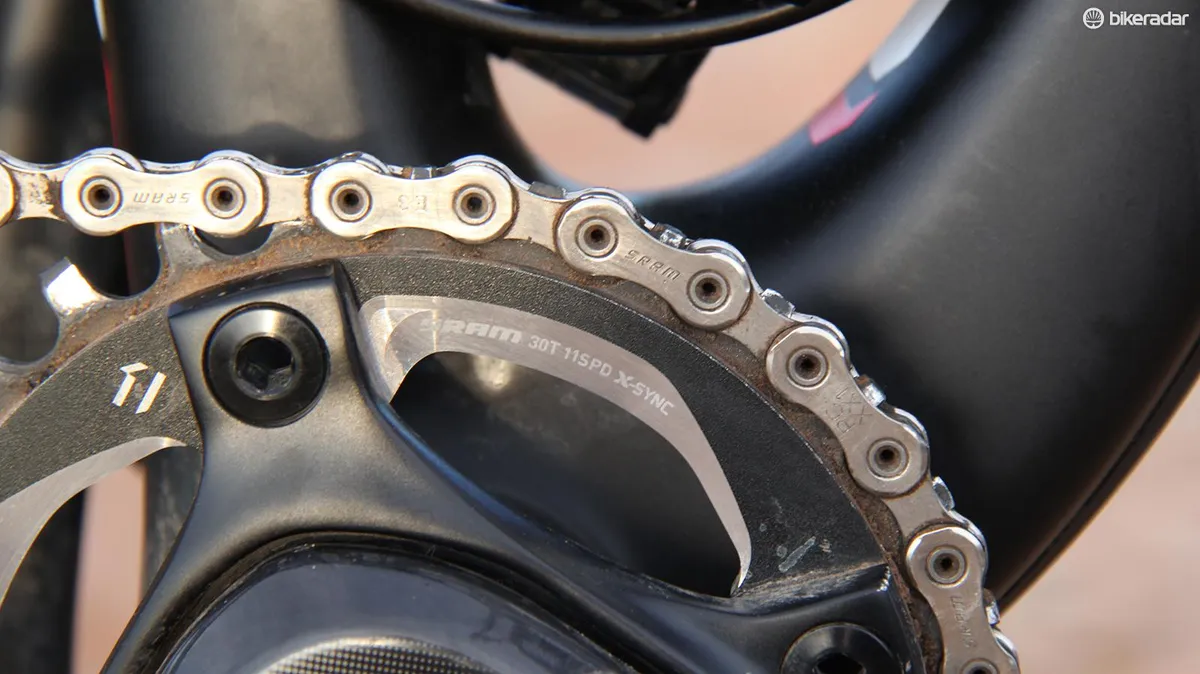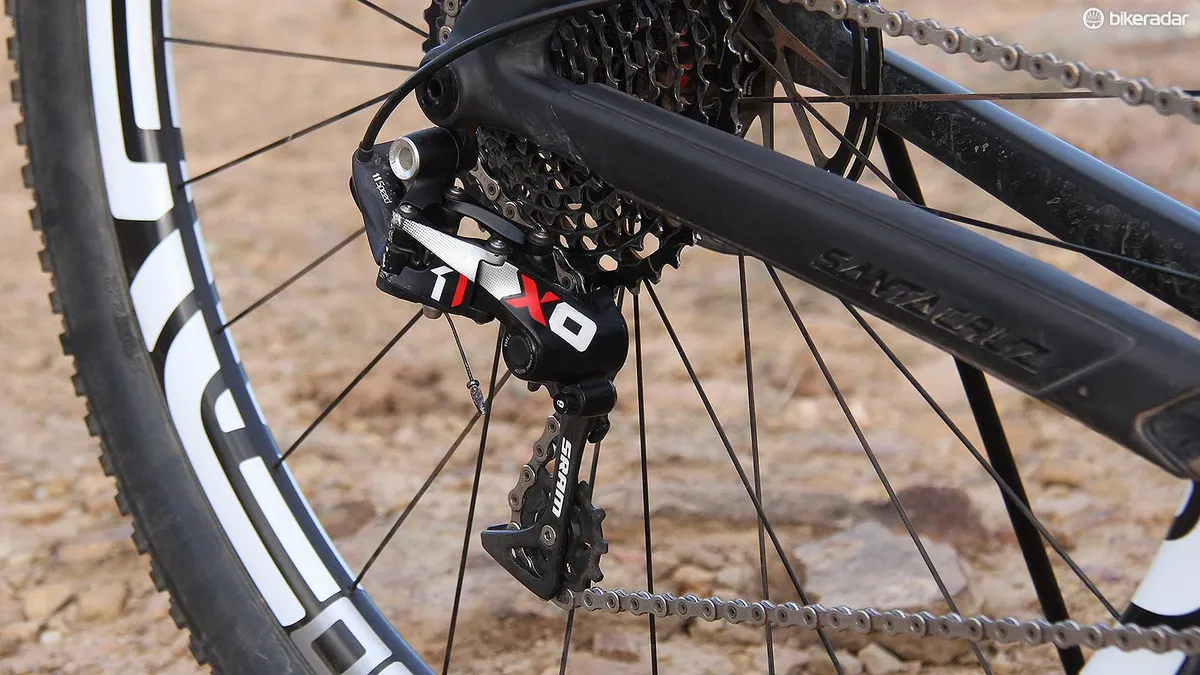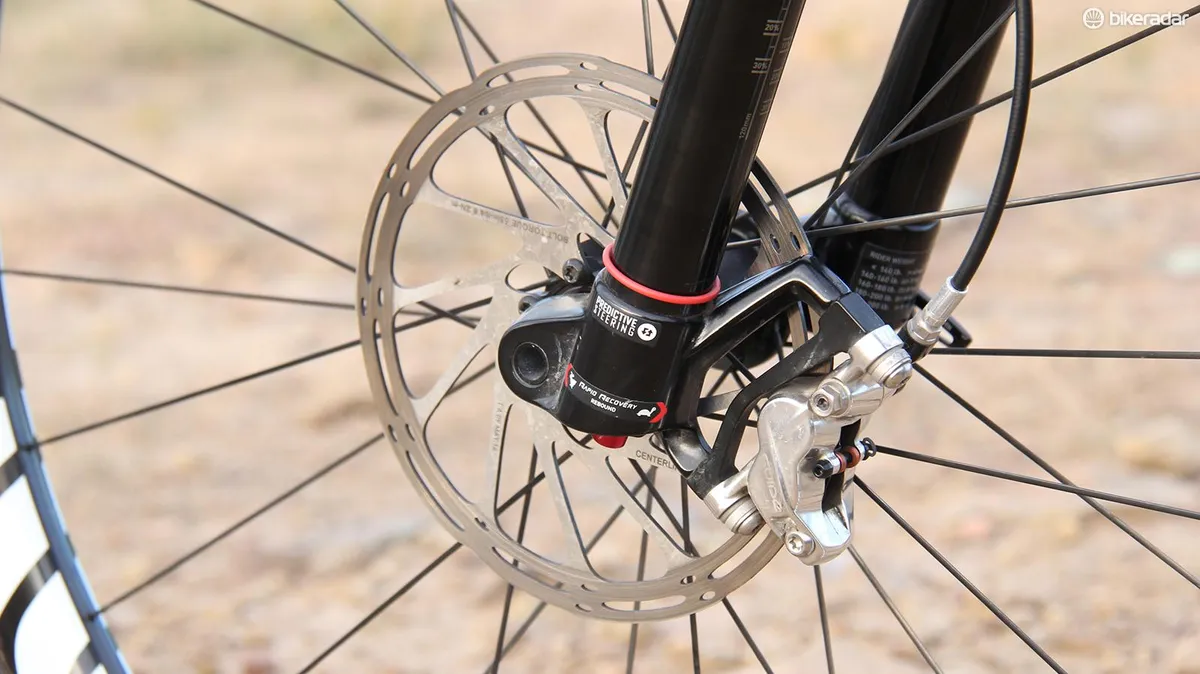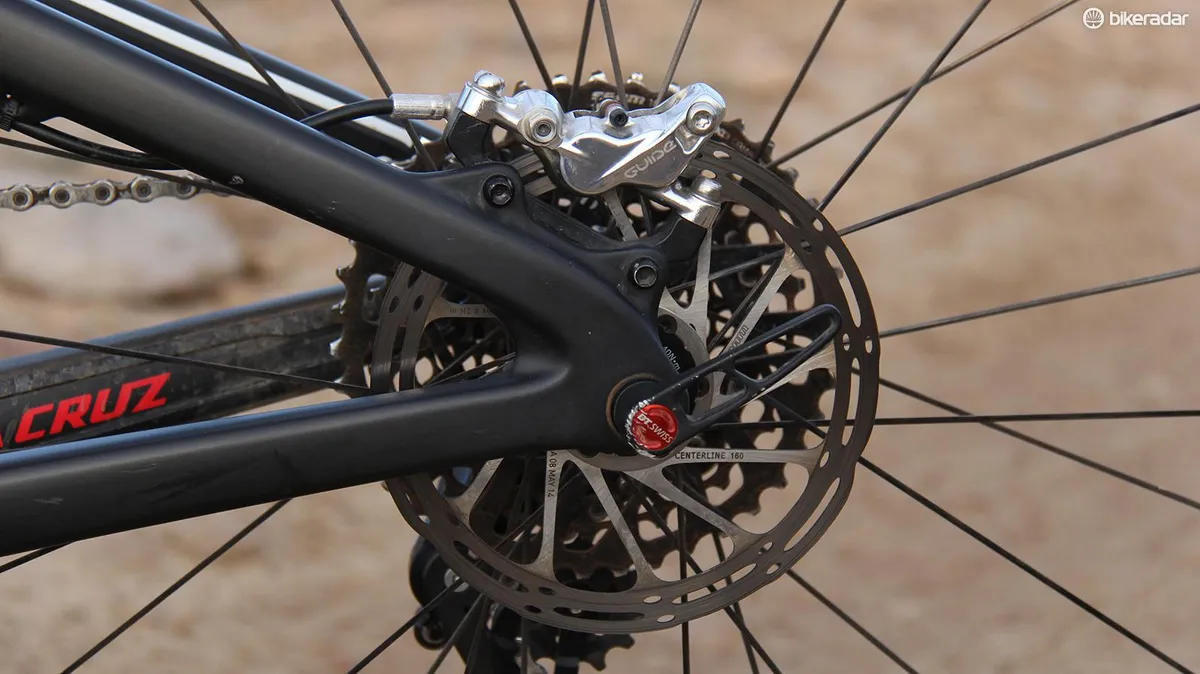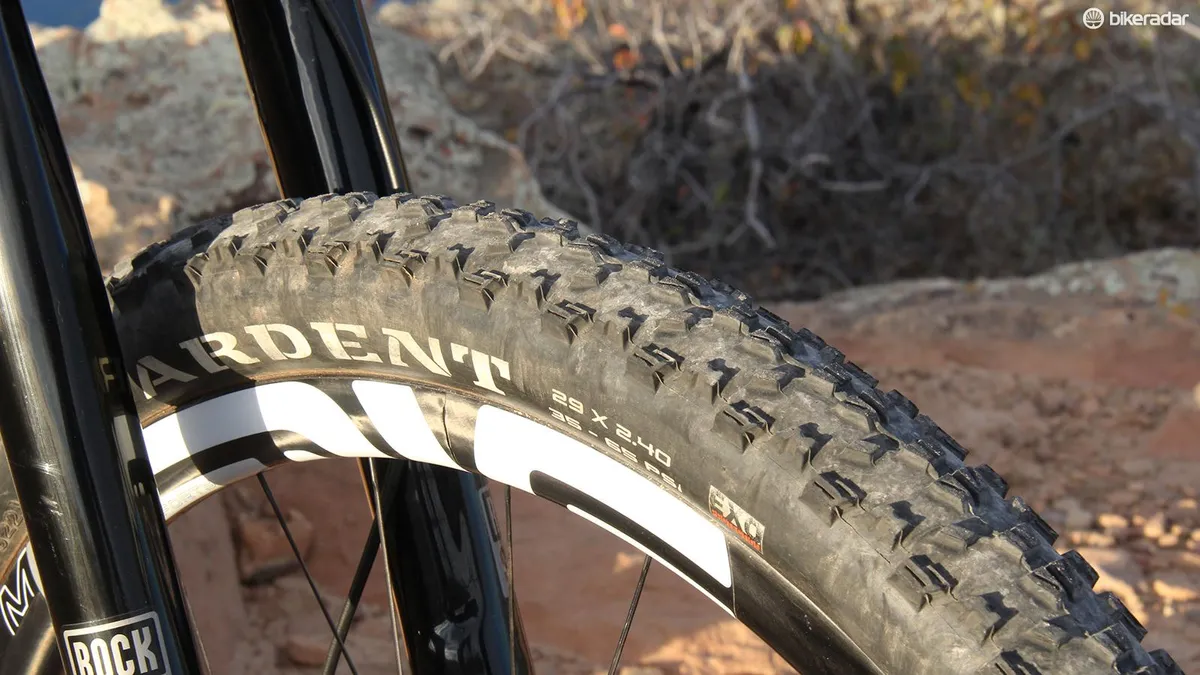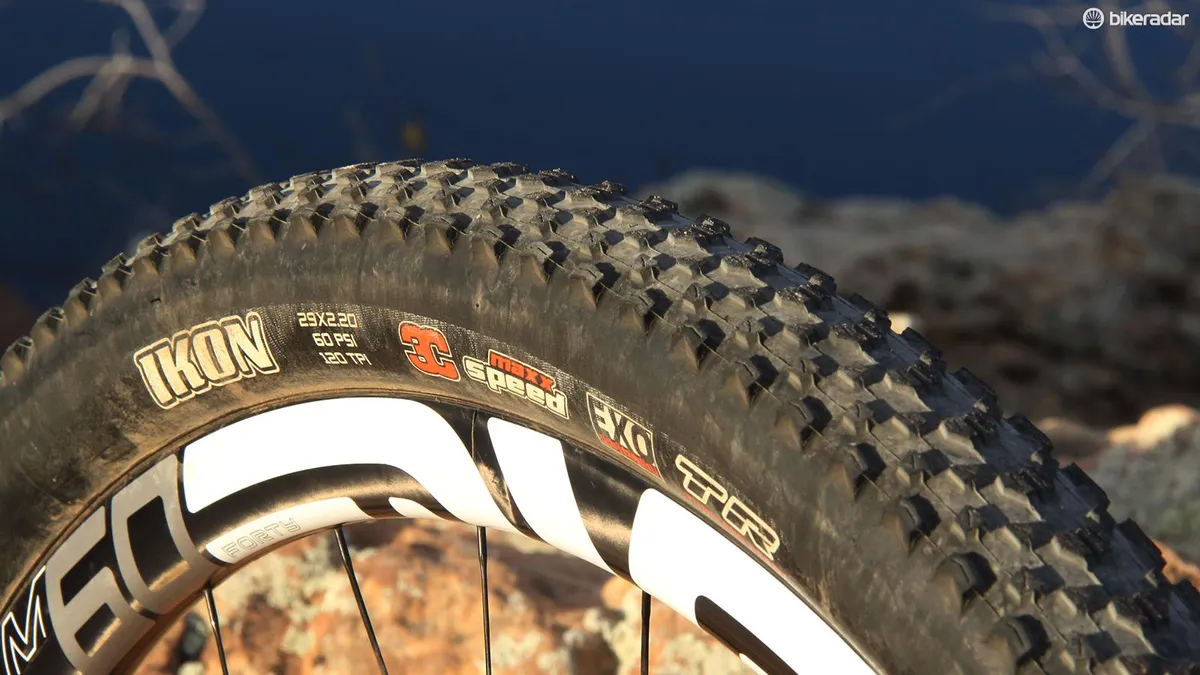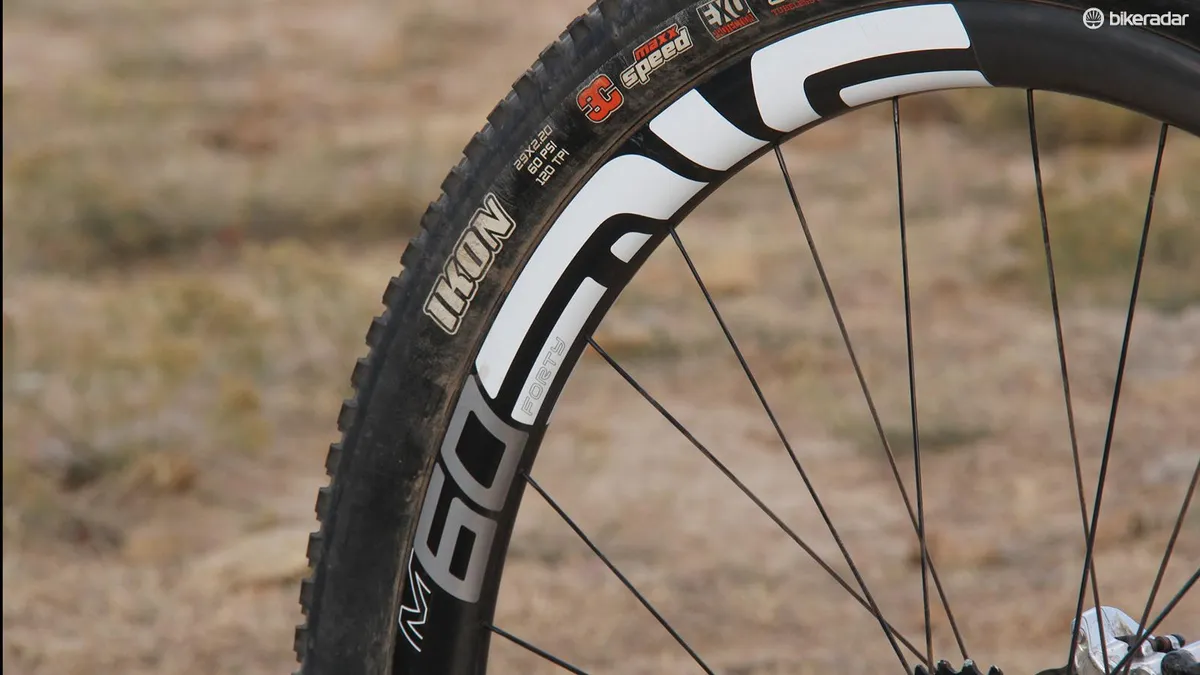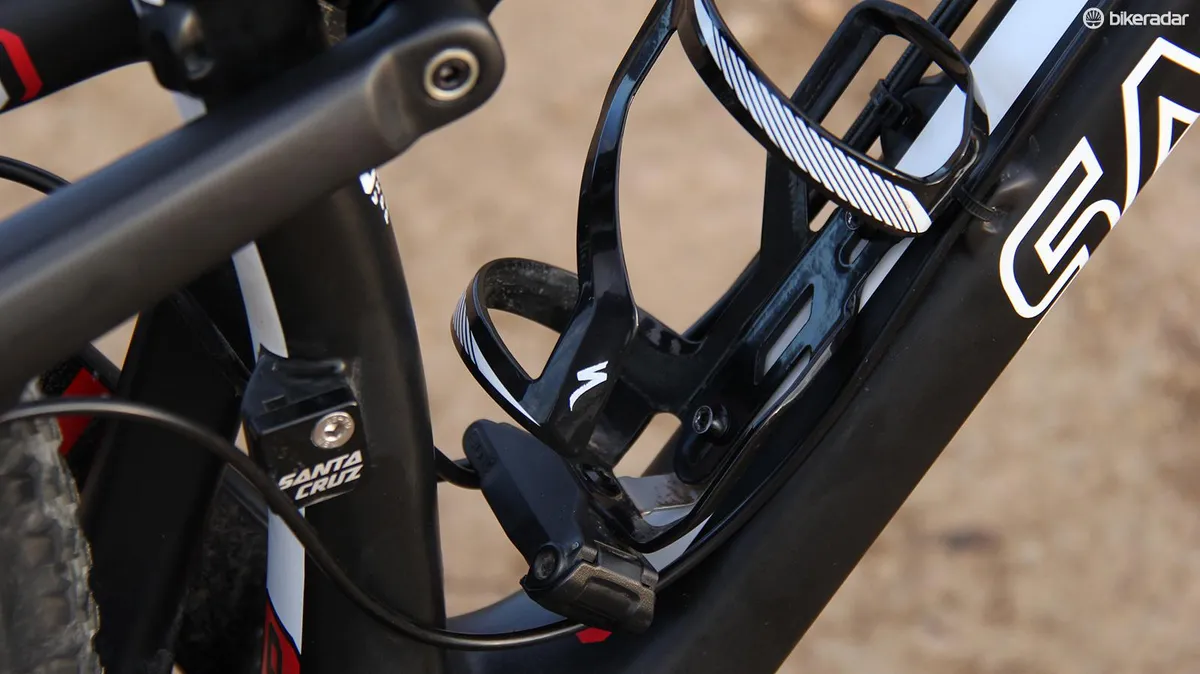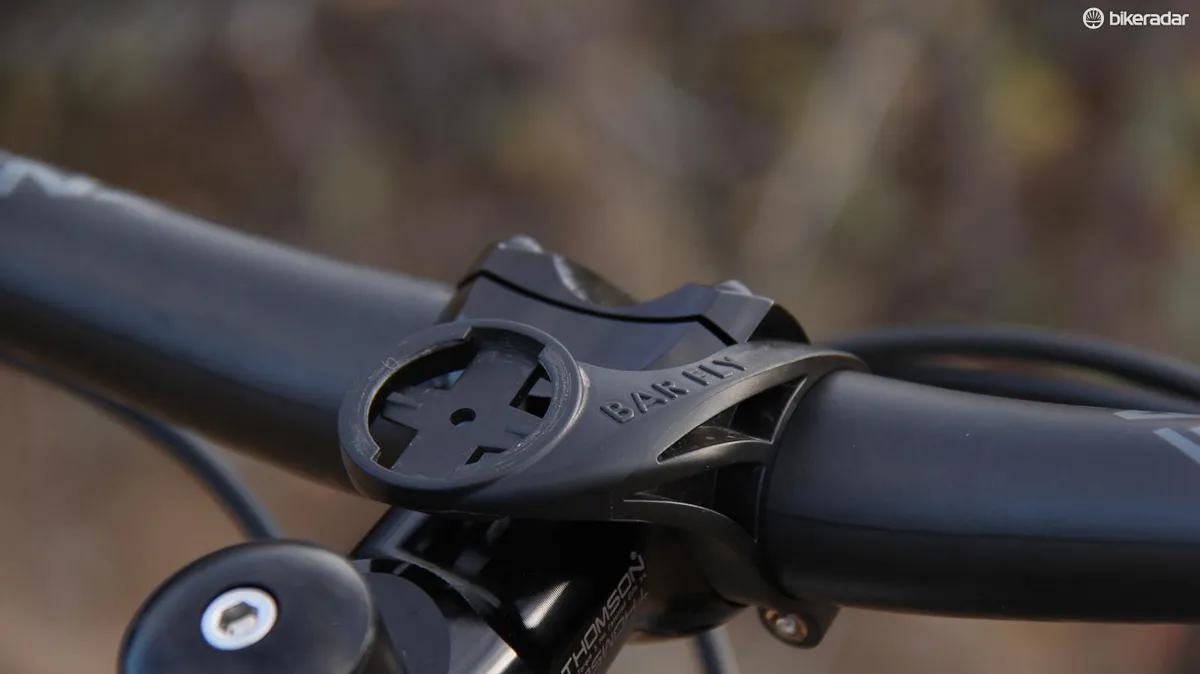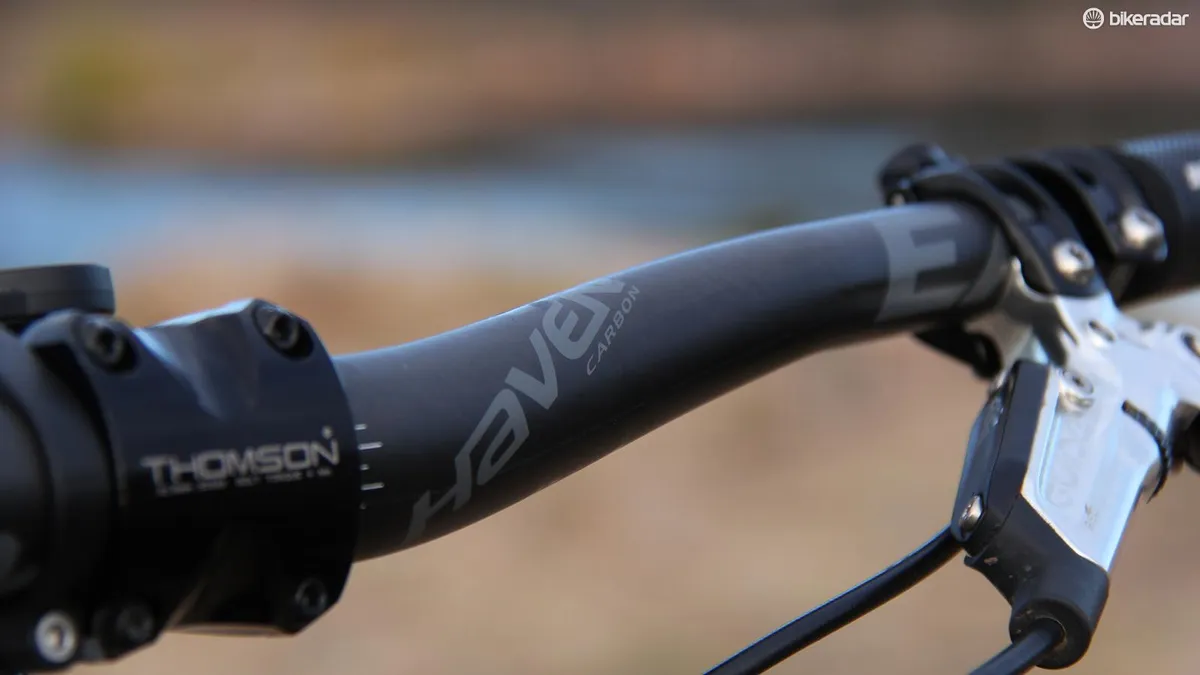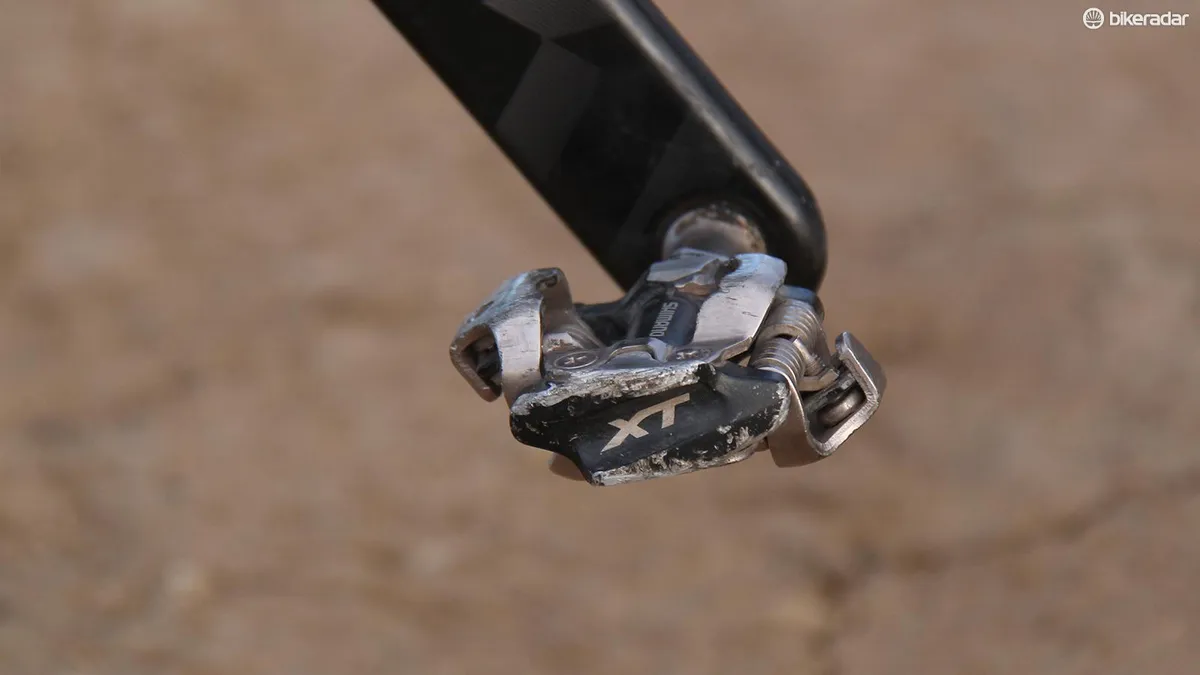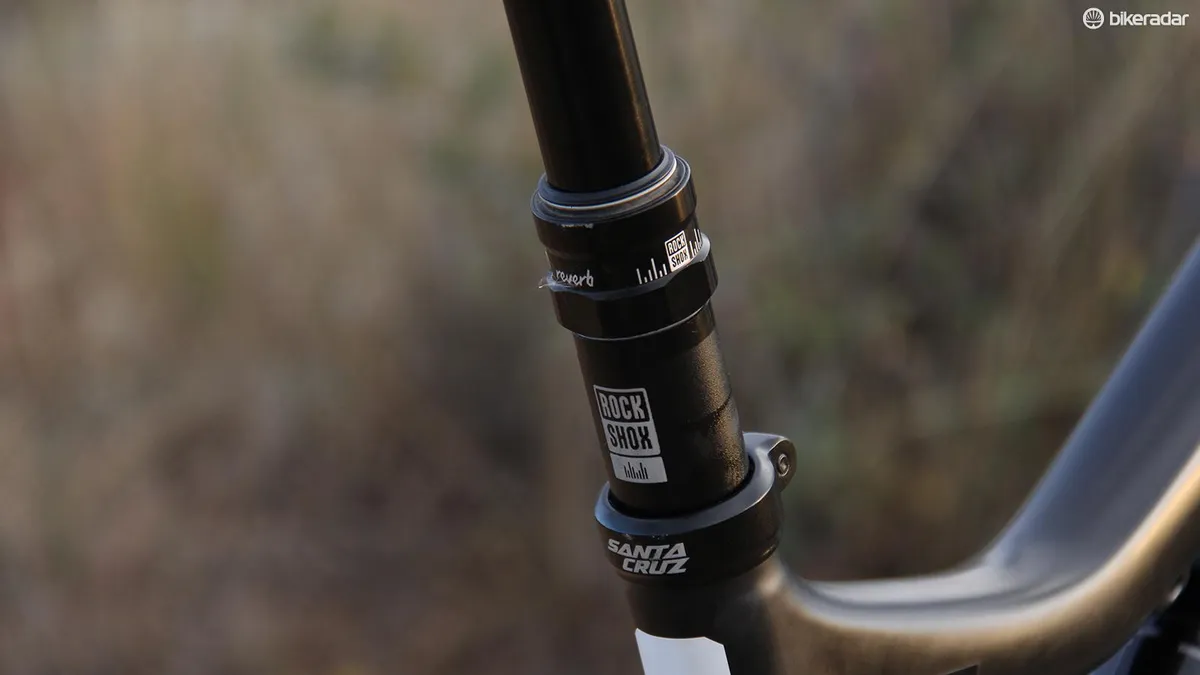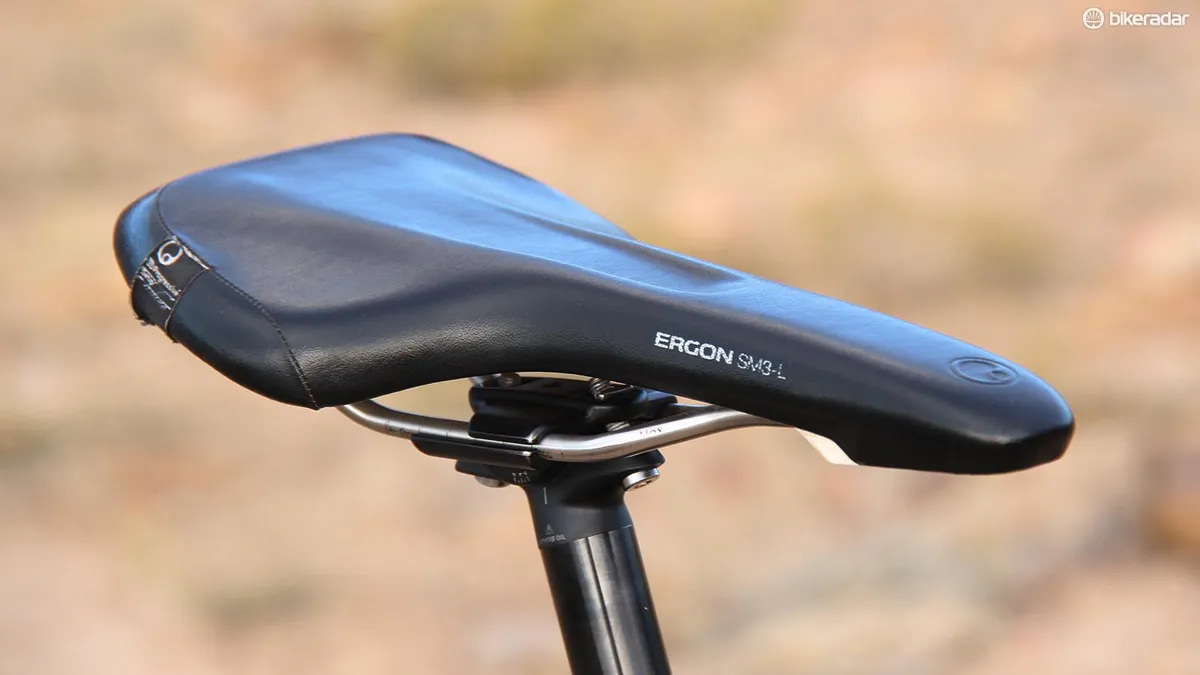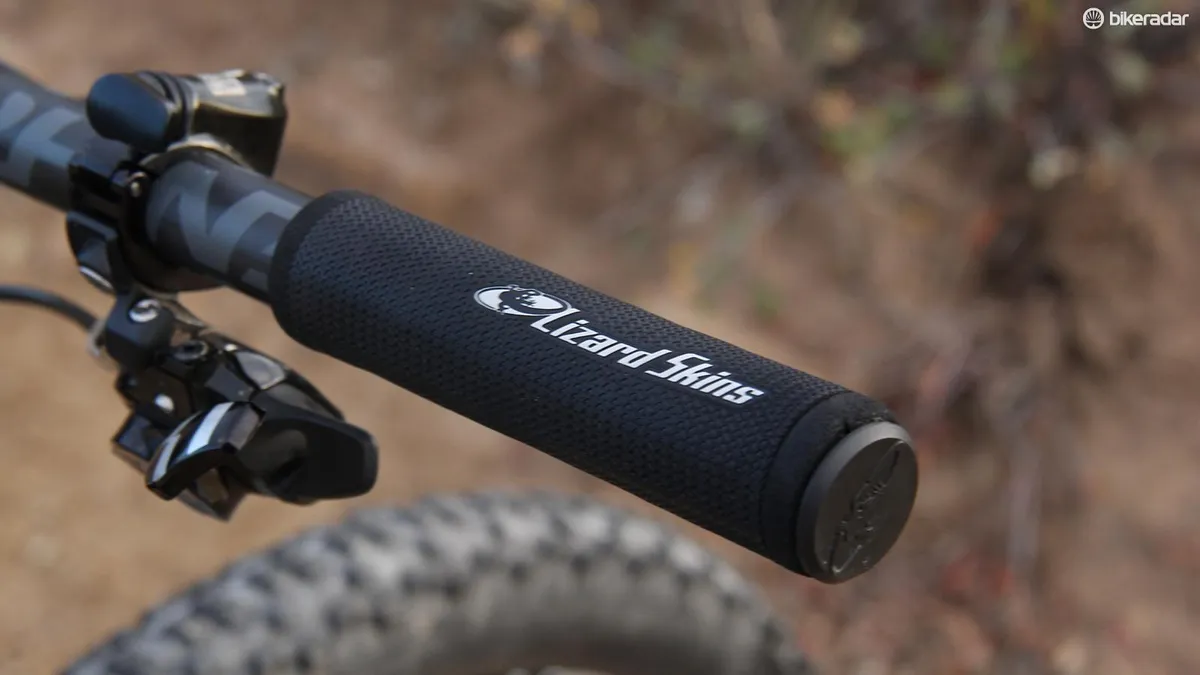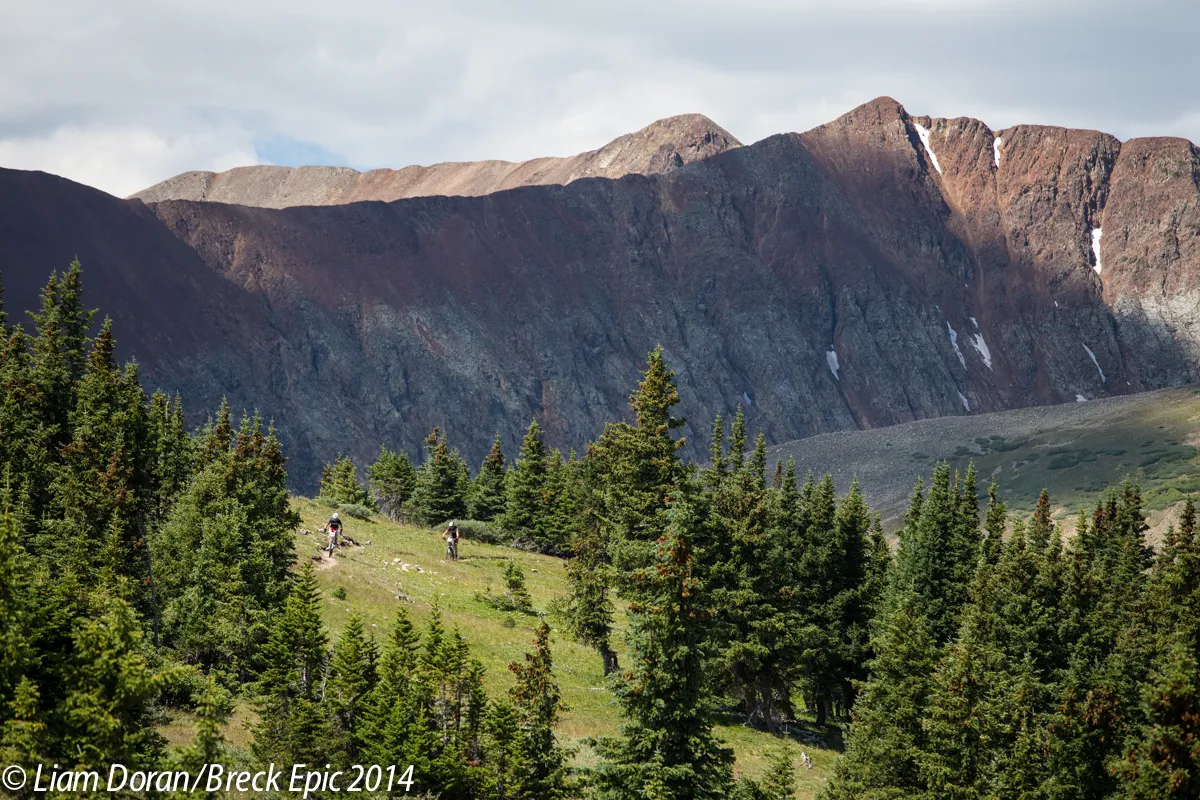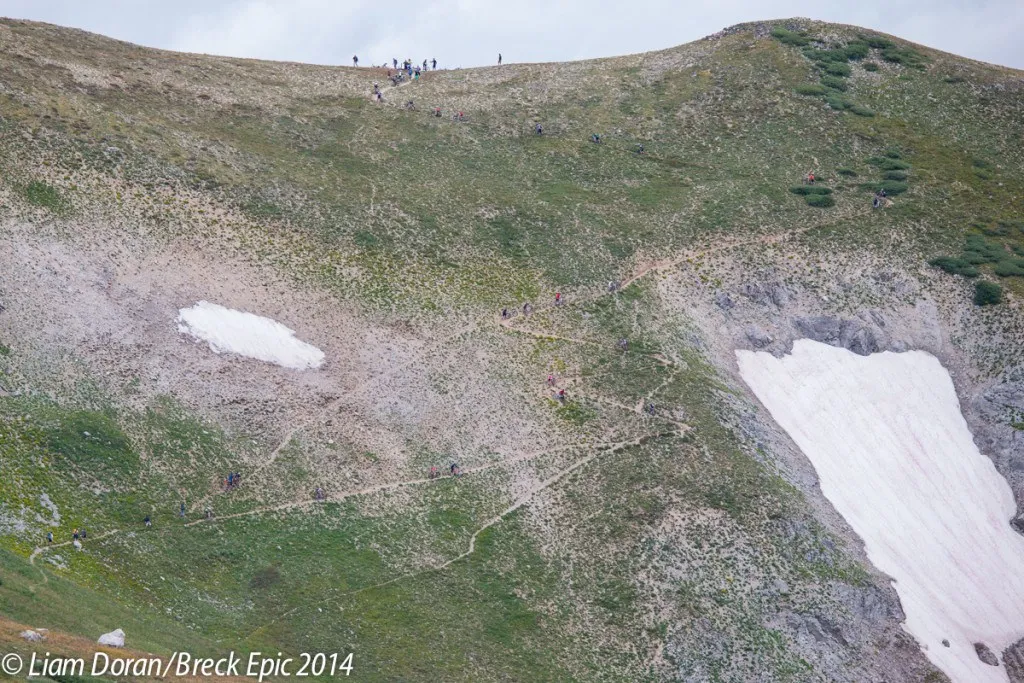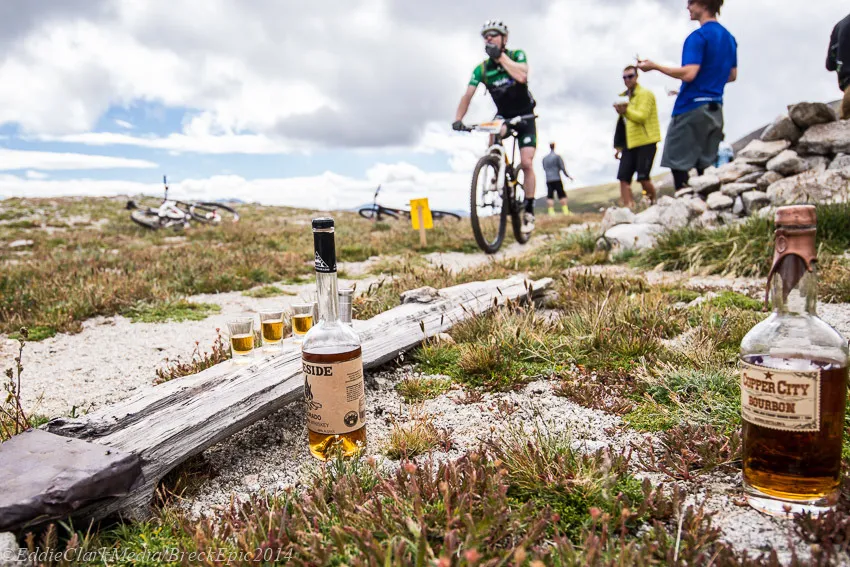Like many of my fellow participants in last year’s Breck Epic, I had no illusions of glory heading into the six-day stage race. I certainly posed no threat to the men’s overall champion Alex Grant. Sure, I could probably beat him at drinking or doughnut eating, but that’s not his game, nor was it mine for six days last August.
While my fellow tech head James Huang focused on making his Ibis Ripley as light and speedy as possible for last year's Laramie Enduro, I took a decidedly different approach to the Breck Epic. My strategy was simple: ride strong, keep the rubber-side down and enjoy each and every mile of singletrack (and there were plenty).
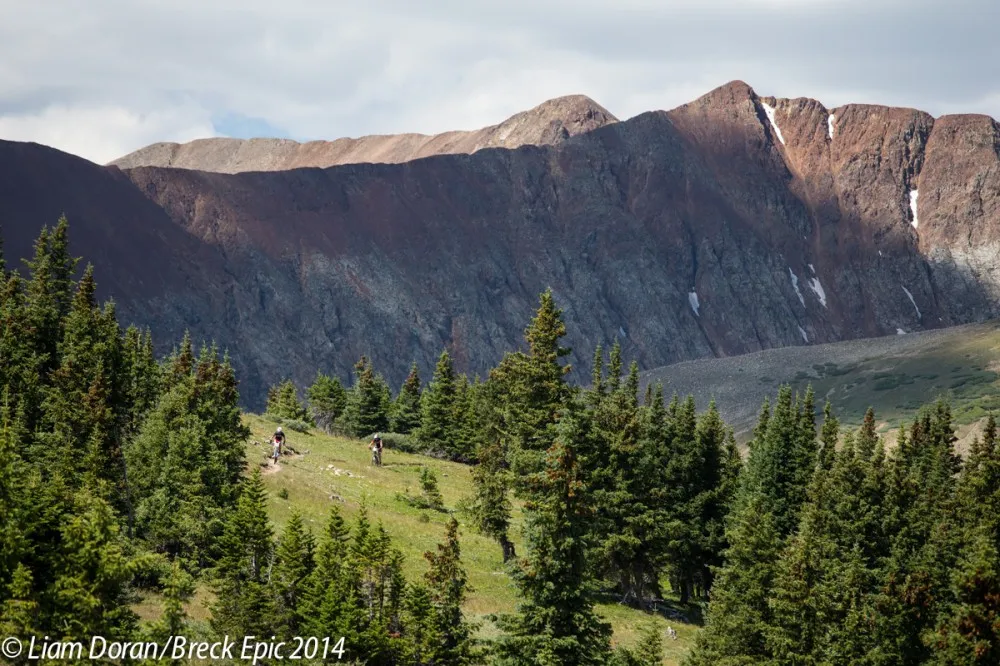
There is plenty of time to take in the landscape while gasping for air on the high altitude climbs
With that in mind, I focused on building a steed that, while still completely race-worthy, placed a premium on fun, rather all out performance. In short, I measured my components by trail-induced grins, not grams.
Does this sound like your type of racing? Then read on, because even if you never toe the starting line at the Breck Epic (which you should) you might still learn a thing or two about building up a race bike that you look forward to riding when you’re not rubbing tyres and racing the clock in your superhero outfit.
- The course: The Breck Epic, a six-day mountain bike stage race that totals 240mi in length and nearly 12,200m of climbing
- The equipment goal: A light, efficient and reliable stage racer that would see me through six days of racing
- The horse: Santa Cruz Tallboy 2 with a cherry-picked build kit intended to maximize fun and minimize suffering
Frame: Santa Cruz Tallboy 2
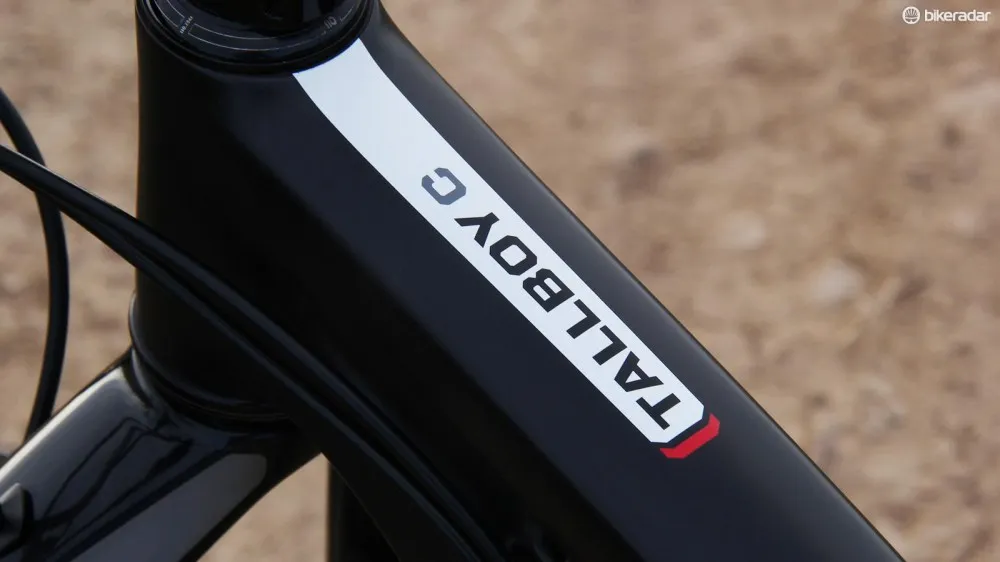
At the heart of this project was a frame many riders — myself included — have come to love, the Santa Cruz Tallboy 2. It’s light (my medium frame with shock weighs 2.3kg), appropriately stiff and deftly straddles the line between cross-country racer and short-travel trail ripper, which suited my needs perfectly.
Furthermore, the Tallboy 2 is a true bike mechanic’s mountain bike. It’s incredibly easy to service, which also makes it a prime candidate for a grueling stage race with a reputation for wearing down equipment as well as riders. The externally routed cables are easy to replace should the need arise — no swearing while attempting to fish cables through tiny ports on the frame. The lower VPP linkage features grease ports that make it easy to flush contaminates from bearings to keep the suspension moving smoothly and silently. Last but certainly not least, the Tallboy 2, like all Santa Cruz mountain bike models, uses a traditional threaded bottom bracket shell. The significance of this feature cannot be overstated — when it comes to reliability, longevity and silence, press-fit bottom brackets still leave much to be desired.
Suspension: RockShox RS-1 fork and Monarch DebonAir shock
RockShox has seriously upped its game in the past two years. The inverted RS-1 fork, with its carbon uppers and steerer tube, a new damper designed to better cope with repeated high-speed impacts, and a propriety hub interface to keep the front end stiff demonstrates SRAM’s collective engineering prowess in composites, suspension and wheel technology.
The Tallboy 2 was designed to accommodate 100mm as well as 120mm suspension forks. I opted to go with a 120mm RS-1. Prior to getting the RS-1 in for long-term testing, I ran a 120mm-travel RockShox SID RCT3. The difference in fore/aft chassis stiffness between the SID and RS-1 is dramatic.
While it’s a capable cross-country fork, the 120mm SID can get twangy during rocky descents, where the lightweight 32mm chassis succumbs to fore/aft flex. The RS-1 came with a 76g weight penalty and while this new wunderfork feels great when straighlining rockgardens, torsional flex was readily apparent when leaning the bike through unbermed turns and while descending through tight switchbacks.
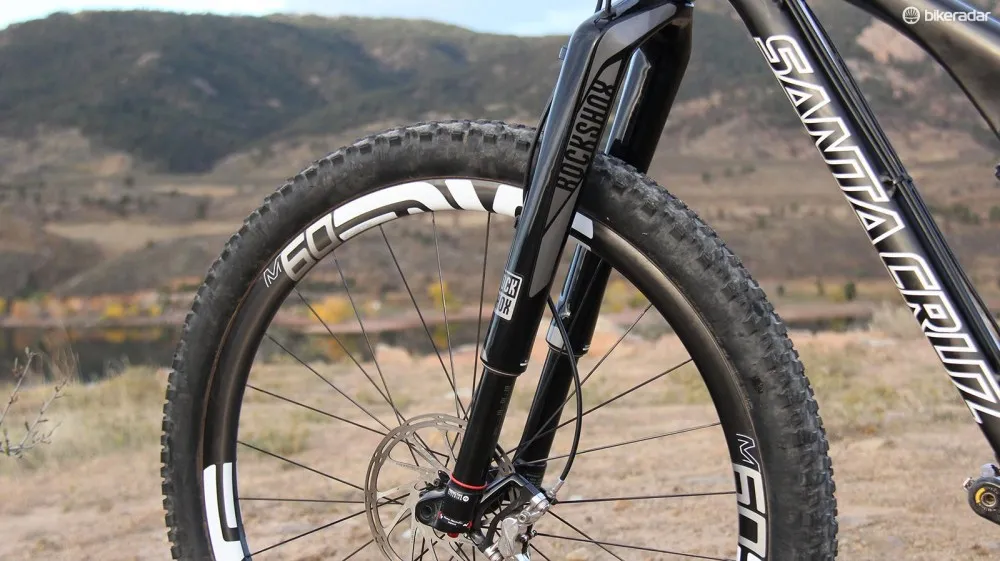
While the RS-1 doesn’t offer much in terms of external damping adjustments, I did appreciate the remote lockout during the many long fireroad ascents that link together the singletrack that surrounds Breckenridge
Related reading: RockShox RS-1 review
If I had to do it over again, I would have swapped the RS-1 for a 120mm Pike. The meager weight gain associated with the Pike is more than made up for by its stellar performance.
Outback, I swapped the stock Fox Float CTD shock for a RockShox Monarch RT3 unit with a DebonAir sleeve. The DebonAir kit, which comes stock on some bikes and can be added to most Monarch rear shocks produced from 2013 onward, provides a higher volume negative air chamber. This increased volume makes the shock more supple through the beginning of the stroke, providing better traction and small-bump sensitivity.
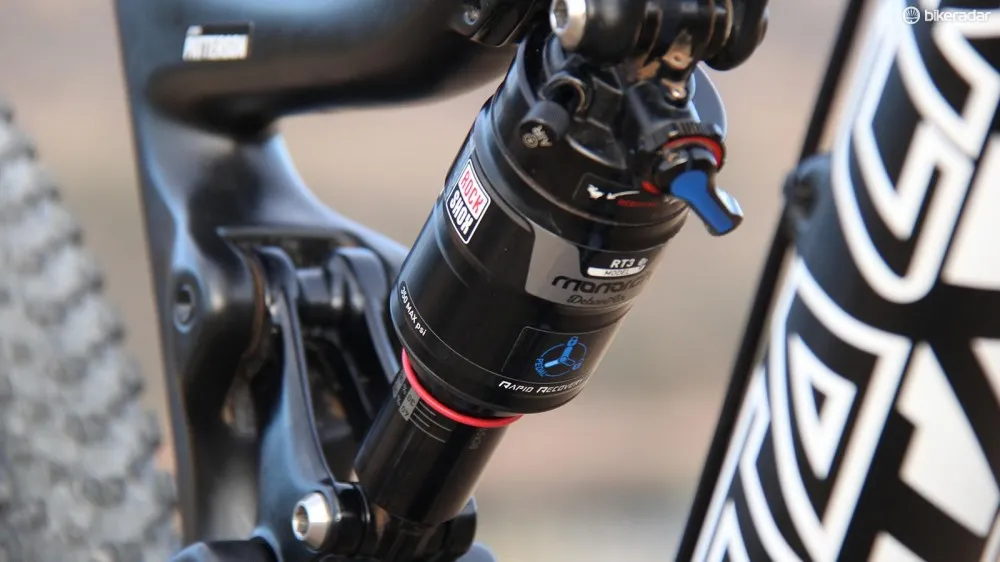
The Monarch DebonAir shock gives the Tallboy a trail-oriented feel
Was it better than the stock shock? That’s hard to say. It was certainly different. Where the stock Float CTD gave the Tallboy a race-tuned feel, the DebonAir-equipped Monarch felt more plush and forgiving on the descents.
In terms of matching the character of the rear suspension with the fork, it would have been a better match for a Pike than the RS-1.
Drivetrain: SRAM X01
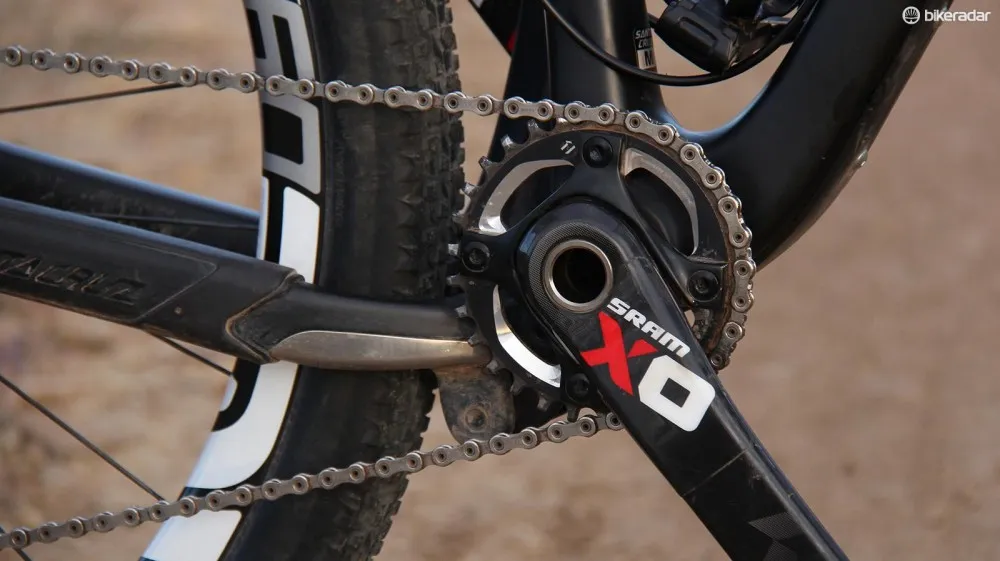
If you're going to run a single chainring, choose it wisely
The Breck Epic involves a lot of climbing. Not all of the terrain is incredibly steep or overly technical, but the fact that racers start from 9,000ft and pedal upward to 12,000ft means that even slight inclines require more effort.
SRAM’s 1x11 groups are incredibly versatile. The 10-42t cassette does a good job of covering a wide-range of gears when paired with the appropriately sized chainring.
After looking at the stage profiles on the Breck Epic website, I swallowed my pride and replaced the 34t chainring I generally run for a much more knee-friendly 30t chainring — it was the smartest decision I made all week.
There’s very little flat or rolling terrain in this race. You’re either gasping for the thin, Colorado air on the climbs or you’re white knuckling the descents. With the exception of an 8mi stretch of downward-trending bike path on the fifth stage, a small chainring treated me right.
So what’s not to like about SRAM X01? Well, the fact that the top-shelf XX1 group uses a different bolt circle diameter than X01 and X1 is questionable. Especially considering one can go as low as a 28t chainring on XX1, while the two other 1x11 groups can only drop to a 30t. I would have ran a 28t chainring for stages 3 and 5 if I could have.
Thankfully, SRAM now offers direct-mount chainrings, so you can go as low as a 26t ring if you feel the need.
Brakes: SRAM Guide RSC
This was the only component I was not confident in prior to the race. I rode the Guide RSC brakes during a product launch earlier in the year. They were good, the best brake system SRAM has produced thus far, but how would they hold up over six days of racing?
The failing of past SRAM/Avid brakes has been their reliability. So it was with some amount of trepidation that I bolted them to the Tallboy.
As someone who generally runs Shimano XT and XTR brakes on my personal rigs, the switch to the Guides came with a small learning curve in terms of lever feel, though not to the same degree when testing other SRAM brakes. The range of modulation between feathering the brake and locking up the wheel is vast.
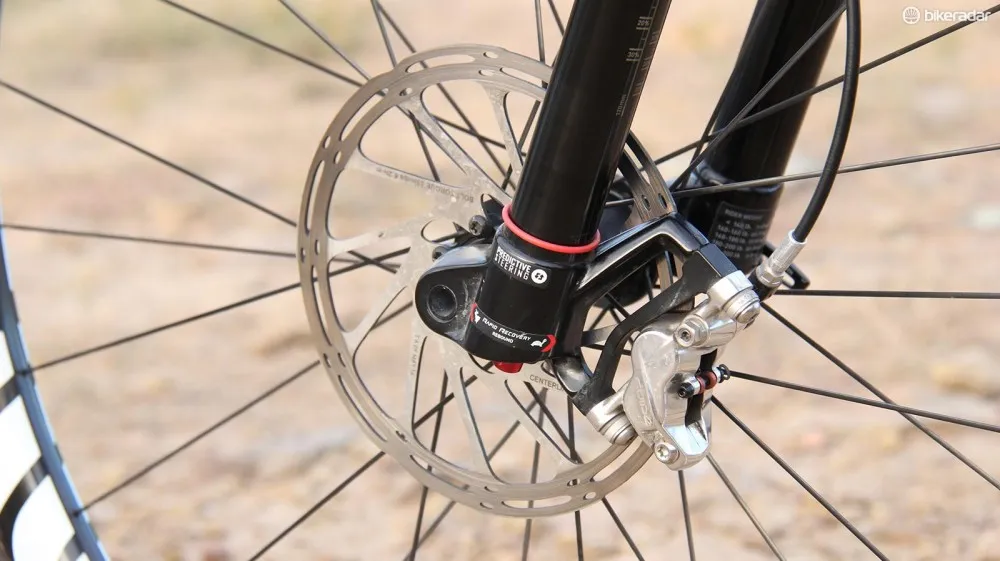
I generally run a 180mm rotor up front with a 160mm rotor in the rear
“Plenty of power and mountains of modulation” was how I described them in my first ride review from the SRAM camp. After thoroughly thrashing the Guides I stand by that statement and add that they provide consistent, fade-free performance and have assuaged my reliability concerns.
Wheels: ENVE M60 rims
When ENVE updated and expanded its carbon mountain bike rim line it made them making them wider, removed the bead hooks, and created four new rim designations. You can read hereabout the whole line. Want to learn why many carbon rim manufactures are moving to hookless rim profiles? Read this.
The M50 rim would be the most apt rim choice from the company’s line for a stage race. But in keeping with the “raceable trail bike” theme, I opted to run the M60 rims. The M60 rims are wider, with an internal width of 23mm and tip the scale at 397g per rim. Since I opted to run the RockShox RS-1 fork I was tied to SRAM’s proprietary front hub.
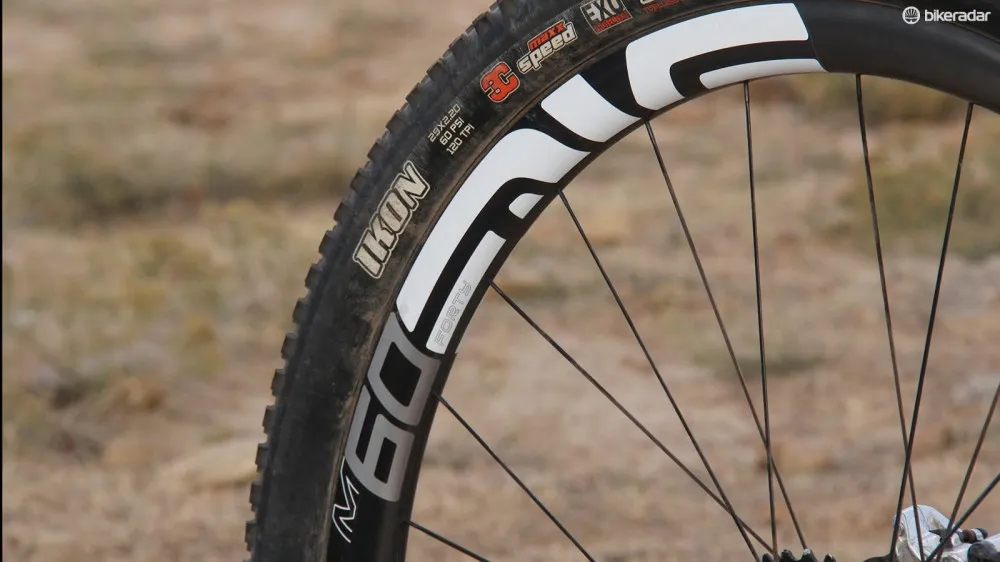
ENVE's ultra-stiff M60 rims were a good fit for the Tallboy 2, but were overkill for the RS-1 fork
Admittedly, this proved to be a poor combination. The rock-solid Enve M60 front wheel exacerbated the RS-1’s torsional flex issues. Some products go together like peanut better and jelly. This particular paring was more like peanut butter and pickle relish — awkward and unsatisfying.
Tyres: Maxxis Ardent and Ikon
Most mountain bikers have closely held opinions about which tyres are best. For the loose-over-hardpack Colorado trails I generally ride, I’ve found Maxxis tyres get the job done. The Ardent provides plenty of grip and the Icon rolls fast and breaks loose in a very predictable manner.
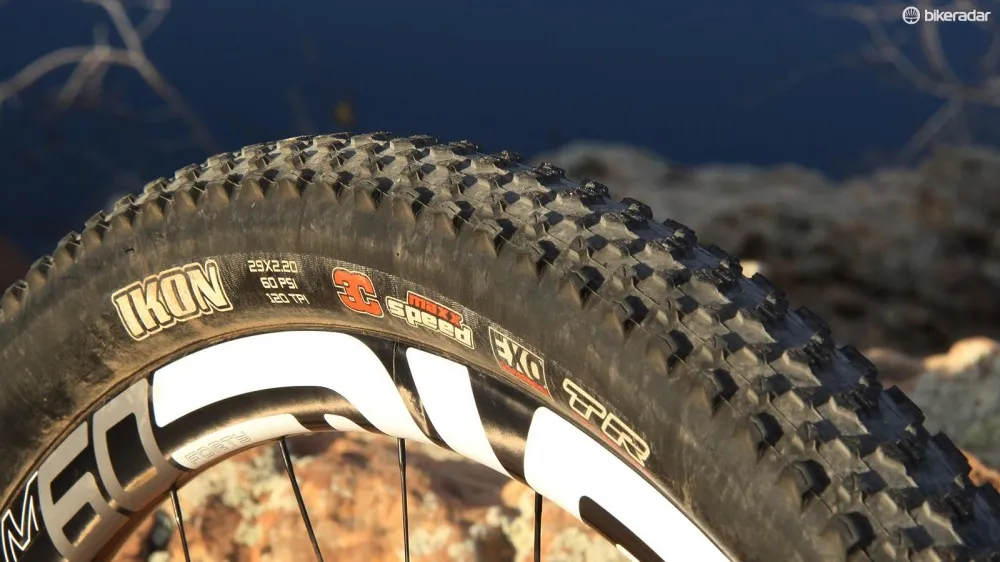
The Ikon rolls fast and breaks loose predictably, making it a great rear tyre for loose-over-hardpack conditions
I ran a 2.4in Ardent upfront and a 2.2in Ikon in the rear. Both tyres were setup tubeless with three scoops of NoTubes sealant for good measure.
Cockpit: Tried and true components
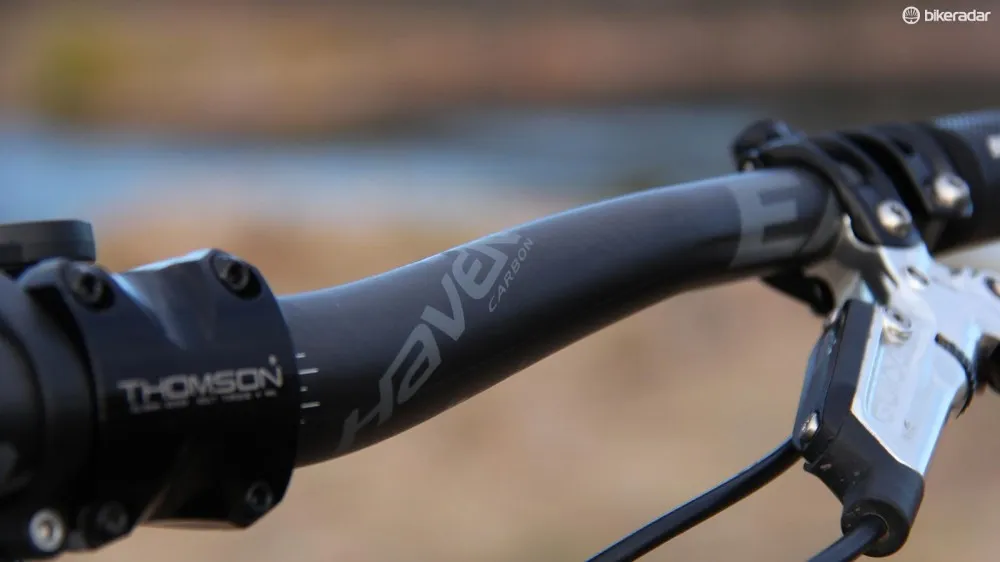
Easton's 740mm wide Haven handlebar was a perfect fit
My cockpit consisted of items I already knew I liked: a 740mm Easton Haven carbon handlebar with Lizard Skins lightweight DSP foam grips mounted to a 70mm Thomson X4 stem.
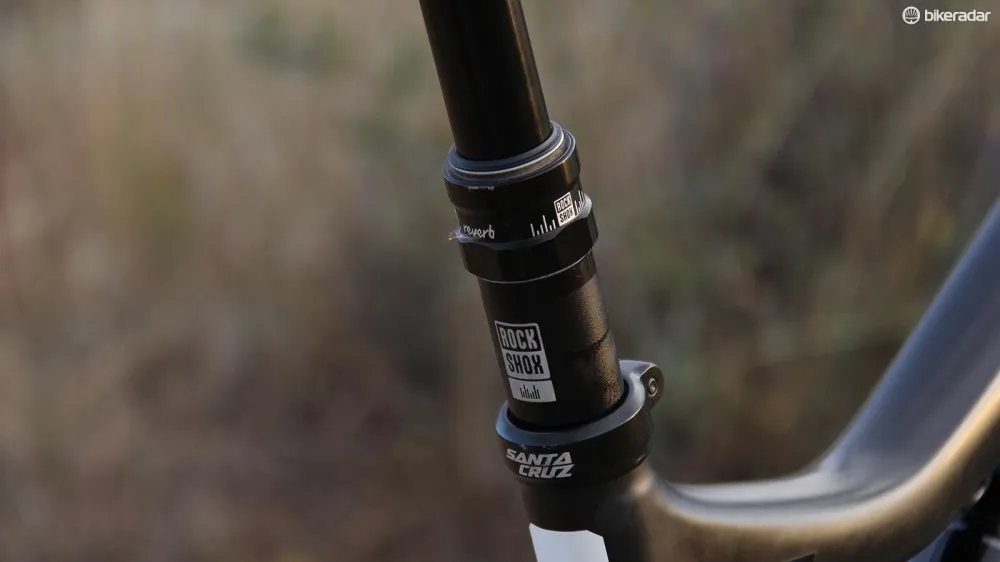
If you're racing for fun, there's no reason not to run a dropper seatpost
My seatpost of choice was the RockShox Reverb with the right-side lever mounted on the left side of the handlebar so that I didn’t have to release my grip on the handlebar in order to drop the seatpost. Last but certainly not least: a well-worn Ergon SM3 saddle kept my backside comfortable for the entire event.
Post race recap
In hindsight, there’s not a lot of things I would do differently if I was building up a similar 'raceable trail bike' for this year’s Breck Epic.

Some may call the climbing in the Breck Epic excessive, but those hard-earned ascents are always rewarded with outstanding ribbons of singletrack leading you back to town
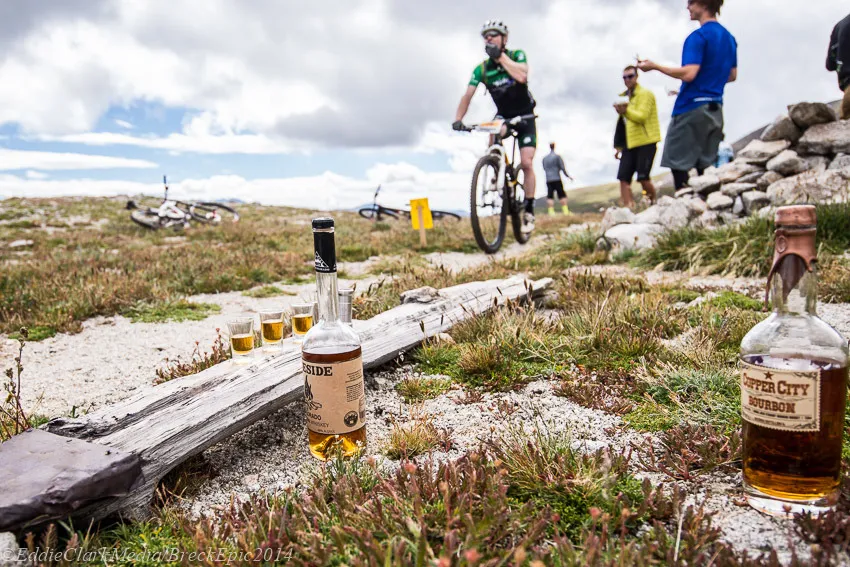
There's liquid courage waiting for you at the top of Wheeler Pass
For one, I would replace the RockShox RS-1 fork with a 120mm Pike. I would also keep a 28t chainring handy for some of the death-march climbs that come on the fifth stage. Other than those two things, the Tallboy 2 served me well for a mid-pack finish. Could I have improved my time if I ran lightweight components or (gasp!) rode a hardtail? Who knows, but I am pretty sure that this setup kept fatigue to a minimum and the fun factor to the absolute maximum, which is all most recreational racers can ask for.
Note: My colleague James Huang is racing the Breck Epic this year, check back for his stage race set-up in the coming weeks
